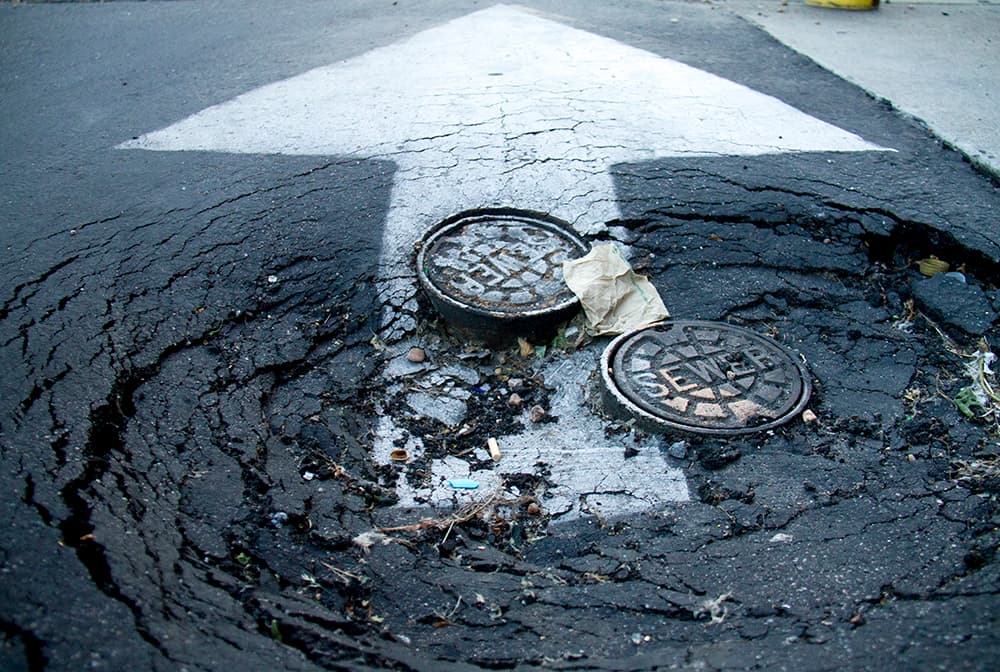
Denver City Council on Monday took months of work by community activists, volunteer committee members and city officials and turned it over to the voters of the city of Denver.
They'll decide on Nov. 7 whether to approve $937 million in borrowing over the next 10 years to pay for library renovations, new rec centers, improvements at major Denver institutions and especially transportation infrastructure. Roughly half of the total bond program will go toward road maintenance, sidewalk connections, intersection improvements and transit infrastructure.
As the Denver Post reported last month, a group of nonprofit organizations, developers and contractors calling themselves "Our Denver" has already raised $424,000 to campaign in favor of the bond. Supporters of the 2007 Better Denver bonds raised and spent roughly $1.6 million to get them passed, and there's no reason to expect this campaign to be cheaper.
The council voted unanimously in favor of an overarching ordinance that describes all the projects and seven separate spending packages that will each appear on the November ballot.
- Transportation and mobility: $431 million
- Cultural facilities, such as the Denver Art Museum, Denver Botanic Gardens and Denver Zoo: $116.9 million
- Denver Health: $75 million
- Public safety: $77 million
- Library system: $69.3 million
- Parks and rec: $151.6 million
- Public facilities system: $16.5 million
The city is not asking for an increase in the tax rate -- expect this to be a major selling point in the campaign for the bond -- but property owners will be paying more for debt service than in the past because their property generally is worth more.
In a press release titled "The People's Bond," Mayor Michael Hancock called the package -- nearly identical to the one he recommended -- "thoughtful, balanced and responsible."
"These measures were created with the most public input of any bond proposal in Denver’s history," he said. "Residents provided more than 4,000 ideas, comments and suggestions for investment through emails and public meetings, 60+ volunteer stakeholder committee members spent countless hours reviewing potential projects and dozens of city staff spent more than a year to make this bond package a reality."
Read previous Denverite coverage of the debate over Denver's 2017 GO bond package and individual projects:
"Equity" is the key word as Denver City Council moves a $937 million bond program closer to the ballot
City Council members say this bond program does a lot to correct long-standing inequalities in infrastructure and amenities around Denver, but housing help to make sure today's residents can enjoy tomorrow's improvements didn't make the cut.
Denver is "maxing out" its credit card with 2017 GO Bond, and housing didn't make the cut
City finance officials told Denver City Council the $937 million bond package recommend by Mayor Michael Hancock represents the maximum that the city can safely and responsibly borrow without raising taxes.
Why a nearly $1 billion bond program isn't enough money for Denver
The 2017 GO Bond represents a once-a-decade opportunity to invest in the city's infrastructure, and for many Denver City Council members, the process highlighted the need for new revenue sources -- new taxes and fees -- in the future. About half of the bond program is going to deferred maintenance on existing infrastructure.
Denver is going to go big with a $937 million bond program
“This bond is an incredible opportunity to respond to the growth and demand we are seeing here in Denver and ensure we preserve and enhance this place we are all so proud to call home,” Hancock said as he unveiled his recommendations. “… The list represents a $937 million investment to protect, repair and improve our city so it can remain the home we are all proud of.”
Denver's once-in-a-decade GO Bond transportation vision, explained
Which modes reign supreme in Denver’s vision for the transportation future? Here’s a breakdown of how biking, walking, pedestrian and vehicular interests fared in the transportation bond proposal.
Projects:
Will Globeville residents get what they need out of Washington Street's $23 million makeover?
The reconstruction of Washington Street from 47th to 52nd is one of a set of projects intended to benefit residents of the Globeville, Elyria and Swansea neighborhoods in northeast Denver.
“You have parents walking up and down Washington Street with a stroller and a bunch of kids, and there is no sidewalk, and it is so unsafe," said Kristin Cardenas, member of a steering committee for the project.
For years, kids have walked between train cars at 47th and York. This GO Bond project would change that
Rail lines cut through Elyria-Swansea with an at-grade crossing at 47th Avenue and York Street. Sometimes trains stop for extended periods of time, severing Elyria from Swansea and blocking children from getting to school at Swansea Elementary School. Sometimes kids miss the free breakfast provided at Denver Public Schools, and sometimes they miss the start of the school day. And sometimes, children clamber between the stopped train cars because they get tired of waiting.
The GO bond sets aside $9.4 million for a pedestrian bridge over the rails.
Mile-long RiNo river promenade suddenly more likely again with $5 million from the bonds plan
The "River North Promenade" as currently conceived would stretch about a mile along the South Platte River, partially replacing Arkins Court between 29th Street and Globeville Landing Park along the river.
These eleven Denver libraries are up for the next renovations, including two of the oldest
Denver’s library leaders aren’t planning any permanent new library facilities at the moment. Instead, they intend to improve what the city already has. The system stands to get about $61 million in the bond program, with most of that money going toward an extensive renovation of the Central Library branch, where staff are struggling to maintain an aging facility and accommodate waves of new visitors.
Westwood’s fight for a recreation center might finally pay off this year
Residents of this low-income, predominantly Latino neighborhood have been fighting for a rec center for more than a decade. The project gets $37.5 million in the bond package.
Renderings of the $9 million plan for Denver’s Paco Sanchez Park show “adventurous” new features
Starting this spring, the city of Denver began filling a quiet corner of Paco Sanchez Park with unusual playground equipment, resurrecting a long-debated plan that once was intended for City Park. The bond program contains $6.5 million for phases II and III.
Walking down Denver's Colfax Avenue could be dramatically different by 2021
Colfax Avenue was built for the golden age of cars. This bond package includes $20 million for improvements that should make the corridor much safer for pedestrians.
“We’ve got one of the most dangerous corridors, in terms of pedestrians, in the city,” said Frank Locantore, director of the Colfax Avenue Business Improvement District. “… It’s crumbling. The sidewalks are falling apart. There’s missing trees. All of the things that make a good, pleasant streetscape are lacking.”
Other major projects include:
- $75 million for a new ambulatory care center at Denver Health;
- $35.5 million for renovation of the Denver Art Museum’s north building;
- $18 million for a Center for Science, Art and Education at the Denver Botanic Gardens;
- $20 million for phase I master plan implementation at the Denver Zoo, including a new animal hospital;
- $6.8 million for improvements at Red Rocks and the Buell Theatre;
- $30.7 million for sidewalk construction around the city;
- $7 million for bike, pedestrian and accessibility improvements to the Alameda underpass just east of Santa Fe (the drainage issues that create the infamous “Alameda Falls” are the responsibility of the railroad, not the city, officials said);
- $25 million to replace the District 6 police building, 1566 Washington St.;
- $17.3 million to replace the District 5 police building, 4685 Peoria St.;
- $15.6 million for an indoor pool in Green Valley Ranch;
- $15 million for an indoor pool at Swansea Recreation Center;
- $7 million for improvements on the Auraria campus to make it easier for cyclists and pedestrians to get around;
- $3.7 million for High Line Canal connections;
- $8.4 million for improvements to the intersection of Colorado and Buchtel boulevards;
- $5 million for multimodal improvements along Hamden;
- $4 million for improvements to the Greek Amphitheater in Civic Center Park;
- $8.6 million for reconstruction of the Eighth Avenue bridge over the Platte River;
- $9.4 million for a pedestrian and bike bridge over the railroad crossing at 47th and York;
- $12 million for multimodal improvements along Broadway, from Colfax to I-25;
- $13 million for implementation of the 16th Street Mall Plan;
- and $17 million for pedestrian improvements in Globeville, Elyria and Swansea.
You can see a full project list here.











